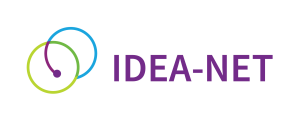Vlerick Business School – Ghent, Belgium
The activities that the VBS has carried out (in the last two years) with regard to equal access/inclusion/diversity are: support and counselling for students and university staff; lectures, workshops, seminars for students, faculty and non-teaching staff; training courses for peer educators; public promotion (e.g. production of media content such as podcasts); improving physical accessibility; improving digital accessibility; and data collection/research/analytics of inequity within the institution and subsequent evidence-based interventions.
At this institution, the activities with the greatest impact were 1) the research, because it allows for more effective and relevant interventions based in evidence; and 2) the DEI track (the mandatory course for all students). It makes students work on projects to implement them. We communicated to the Diversity Managers Association in Belgium that we have an open call for projects, which allowed for different companies and organizations to tell us that they need people to help with a DEI project. Our students are then offered a sort of intern position. Students work on the project with a coach from the external organization (also sometimes internal – sometimes colleagues in the school act as coaches). Those projects have been some of our most important projects. For example, one of the projects on accessibility also gave us a chance to improve our campus for students with visual impairments. Therefore, the DEI track gives us an opportunity to have a lot of people work on DEI (around 300 people per year). It is a mutually beneficial exchange of information, knowledge and practice. Students get coached by professionals and get a chance to do a consulting project in the real world, while we learn from what other companies and professionals are doing on DEI. We list of all the projects per year with some of their insights and disseminate them. Some examples of projects are: the podcast project, the DEI calendar project, the cultural activities project, the accessibility for people with disability project, LGBTQ-related projects, neurodivergence-related projects thus creating a lot of connections and results/outputs. In addition to activities to support inclusion, VBS implements measures/activities to counter exclusionary and discriminatory practices through recommendations/guidelines.
The last innovative practise/tool introduced at BVS when it comes to ensuring inclusion, diversity and equal access was “The Game Changer Scholarship”: this is a ‘connect’ type of project, run together with the Sustainability Centre, the Advancement team, the Masters and Executive Educations teams, and it aims to bring in super diversity in our classrooms. Namely, we want to bring at the table students with radically different worldviews around sustainability, and who can bring significant contributions in this field. Our target students are thus coming from the Global South and doing NGO or community work on core sustainability topics, from education to climate crisis and conservation. Even when offered scholarships, these students cannot afford the cost of living for education in Belgium. Therefore, we get companies to sponsor these costs, but we offer these companies something in return. And because we are an educational institution, and DEI is a dimension we want to educate society on, we use games developed by our students in the DEI course to raise awareness in a fun but meaningful way. We offer these game kits plus a train-the-trainer session to companies in exchange for funding for a scholarship to bring in more students working in community projects and NGOs in the Global South. So, the proceeds of our services to these companies go into fundraising for this scholarship.

Diversity, Equity and Inclusion Committee
Ghent, Belgium
IDEA-net: Expanding the network of Inclusion, Diversity, Equity and Access (IDEA) practitioners in higher education through institutional capacity building
Project ref: 2022-1-NL01-KA220-HED-000089789

This project has been funded with support from the European Commission. This website reflects the views only of the authors, and the Commission cannot be held responsible for any use which may be made of the information contained therein.
